RESEARCH
Beyond Diversity:
A Prescription
for Inclusion
Case Study 2 | Psychological Safety
as the Key to Innovation
September 2025 (Japan)


Beyond Diversity:
A Prescription for Inclusion
Creating an environment that fosters free thinking is essential—not just recognizing differences—if we are to turn diversity within organizations into a source of innovation.
In this chapter, we explore the concept of psychological safety as a critical condition for enabling diverse teams to innovate. Drawing on internal survey data and a case study from the R&D Division, we examine how to build an environment where individuals can express their ideas freely without fear of failure or criticism.
INDEX
01
The Relationship Between Psychological Safety and Innovation Based on Data
An internal survey conducted in 2024 revealed a positive correlation between psychological safety* and innovation**, as shown in the graph below. This suggests that psychological safety serves as a vital foundation for fostering innovation.
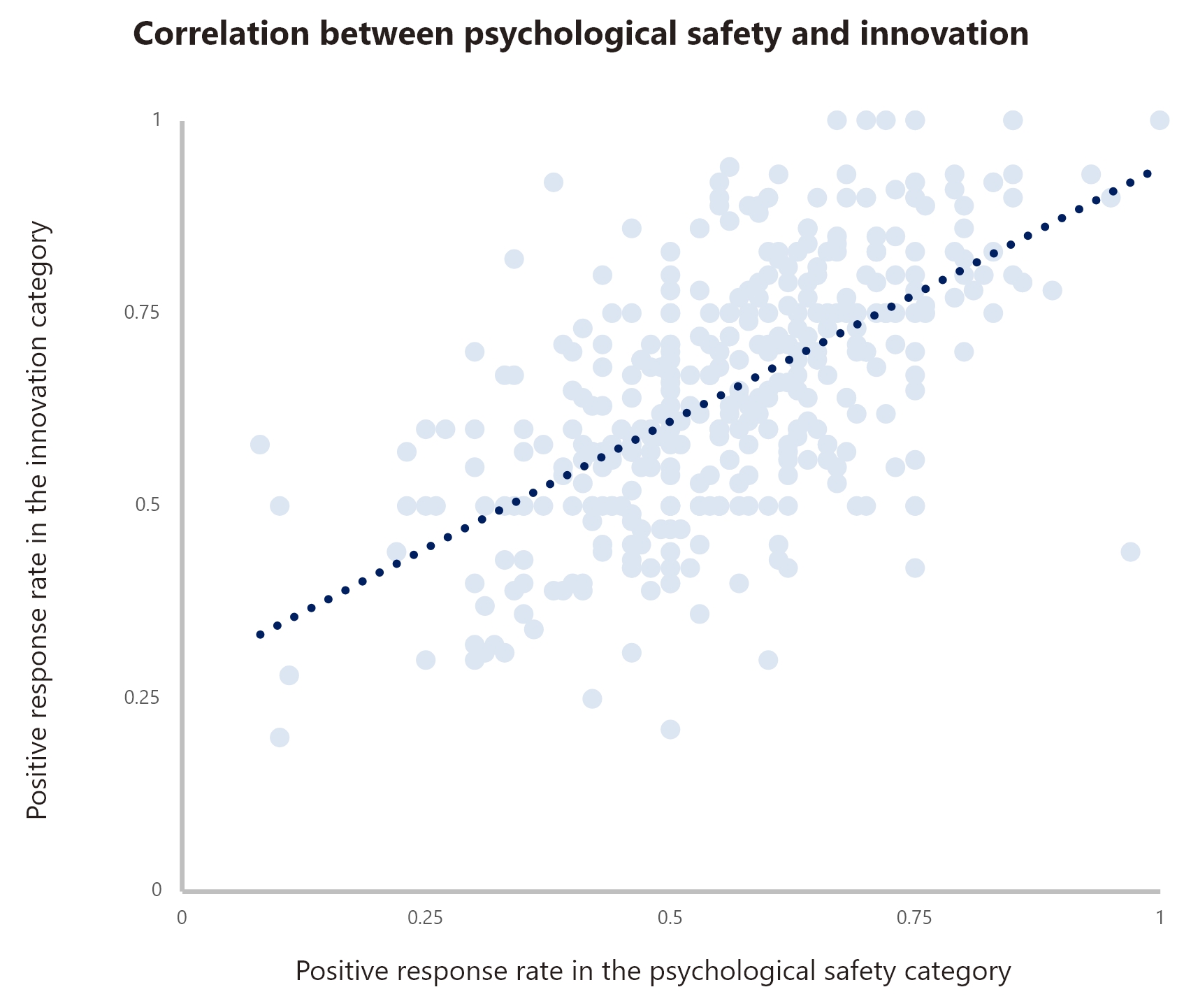
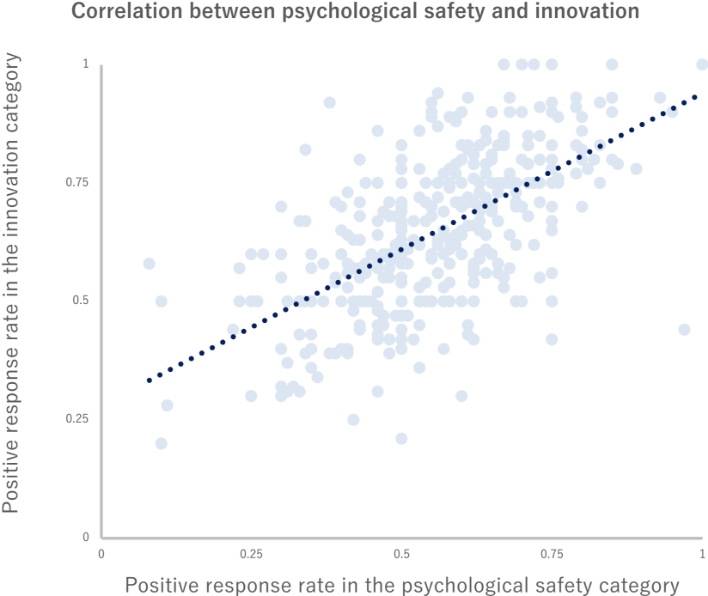
-
*Examples of psychological safety indicators:
“It feels safe to take social risks (e.g., asking questions, making mistakes, highlighting problems).”
“Values diverse perspectives, even if they are different from their own.”
-
**Examples of innovation indicators:
“Encouraged to come up with better ways of doing things.”
“My manager rewards risk-taking in order to drive innovation.”
In particular, the R&D Division scored high on the statement: “In my team, it feels safe to take social risks (e.g., asking questions, making mistakes, highlighting problems),” indicating that psychological safety is a defining feature of the team.
One team, composed of members from diverse cultural and linguistic backgrounds, has created an environment that continuously fosters innovation. Their efforts earned them the “Psychological Safety Award 2024 Gold Ring” in Japan. Let’s take a closer look at their initiatives.
Interviewees
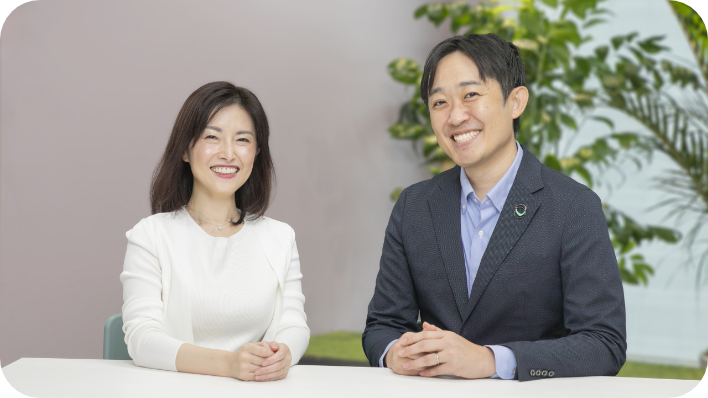
Minako Nakata: Leader of the Global Action Team (left in photo)
Masami Ikeda: Leader of globalization in the R&D Strategy Department (right in photo)
02
Designing Opportunities to Overcome Mental Barriers: A Case Study
— What efforts have you made to build a culture that continuously generates innovation among diverse members?
 Nakata: The R&D Division includes researchers of various ages, genders, nationalities, and research fields. Around the time we launched our initiatives, English was becoming the official language within the company, and our workforce was becoming increasingly diverse. To drive innovation, we needed to reform our culture to integrate ideas from this diverse workforce.However, this process came with challenges—not just language barriers, but also differences in values and ways of thinking that could lead to misunderstandings. These “mental barriers” can hinder the benefits of diversity and undermine psychological safety. For example, in organizations, people may interpret the same situation differently depending on their role or perspective. One leader once told me, “Our foreign national member only complains.” This leader perceived the feedback as negative and expected members to propose solutions along with their concerns. However, the member believed that reporting issues was part of their role, while it was the leader’s responsibility to find solutions from a broader perspective. The member thought they were being supportive by raising issues.
Nakata: The R&D Division includes researchers of various ages, genders, nationalities, and research fields. Around the time we launched our initiatives, English was becoming the official language within the company, and our workforce was becoming increasingly diverse. To drive innovation, we needed to reform our culture to integrate ideas from this diverse workforce.However, this process came with challenges—not just language barriers, but also differences in values and ways of thinking that could lead to misunderstandings. These “mental barriers” can hinder the benefits of diversity and undermine psychological safety. For example, in organizations, people may interpret the same situation differently depending on their role or perspective. One leader once told me, “Our foreign national member only complains.” This leader perceived the feedback as negative and expected members to propose solutions along with their concerns. However, the member believed that reporting issues was part of their role, while it was the leader’s responsibility to find solutions from a broader perspective. The member thought they were being supportive by raising issues.
Once this misunderstanding was resolved, their relationship improved, and constructive dialogue led to workplace improvements.
When we encounter behavior that differs from our own norms, it’s natural to feel confused. But instead of avoiding the other person, we must step outside our assumptions. That’s why we established the Global Action Team (GAT), focusing on globalization as a key aspect of diversity, to create opportunities that bridge mental barriers.
— Misunderstandings like this can happen in any organization. What specific initiatives have you implemented to overcome mental barriers?
Nakata: We listened carefully to members within the organization and designed initiatives that considered mindsets, skills, and practices. We aimed to lower participation barriers and create opportunities for both learning and action through engaging, multifaceted approaches.
-
Case 1: Cross-Cultural Events
The aim of these events is to deepen understanding of overseas research hubs. Researchers from different countries give cultural seminars and host casual gatherings where participants enjoy local cuisine and discuss cultural differences. These events lower the psychological barrier to using English and foster mutual understanding.
-
Case 2: Interactive Workshops and Seminars
Several sessions have been held on topics such as fixed vs. growth mindsets, inclusive language, and self-efficacy. Through active discussions and mutual understanding, participants become aware of their own biases and develop a more flexible mindset.
-
Case 3: Language Buddy Program
Proposed by foreign national members, this program pairs members with different native languages to help each other learn and practice. Based on language level, availability, and interests, pairs are matched to exchange language skills and discuss work topics. Monthly gatherings strengthen the community network. The program has been expanded to overseas labs and has even led to award-winning ideas in internal contests.
Comments from Participants
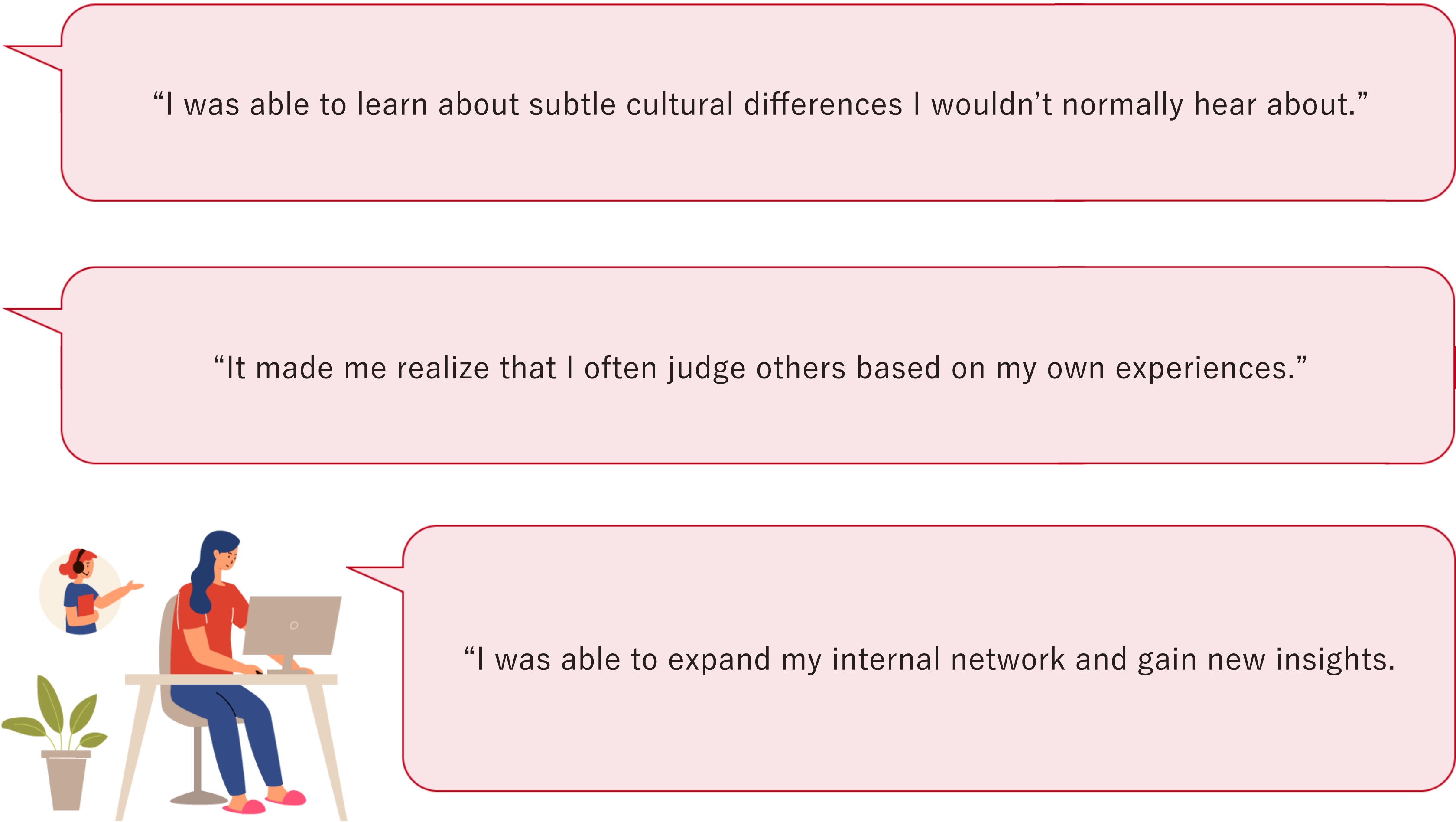
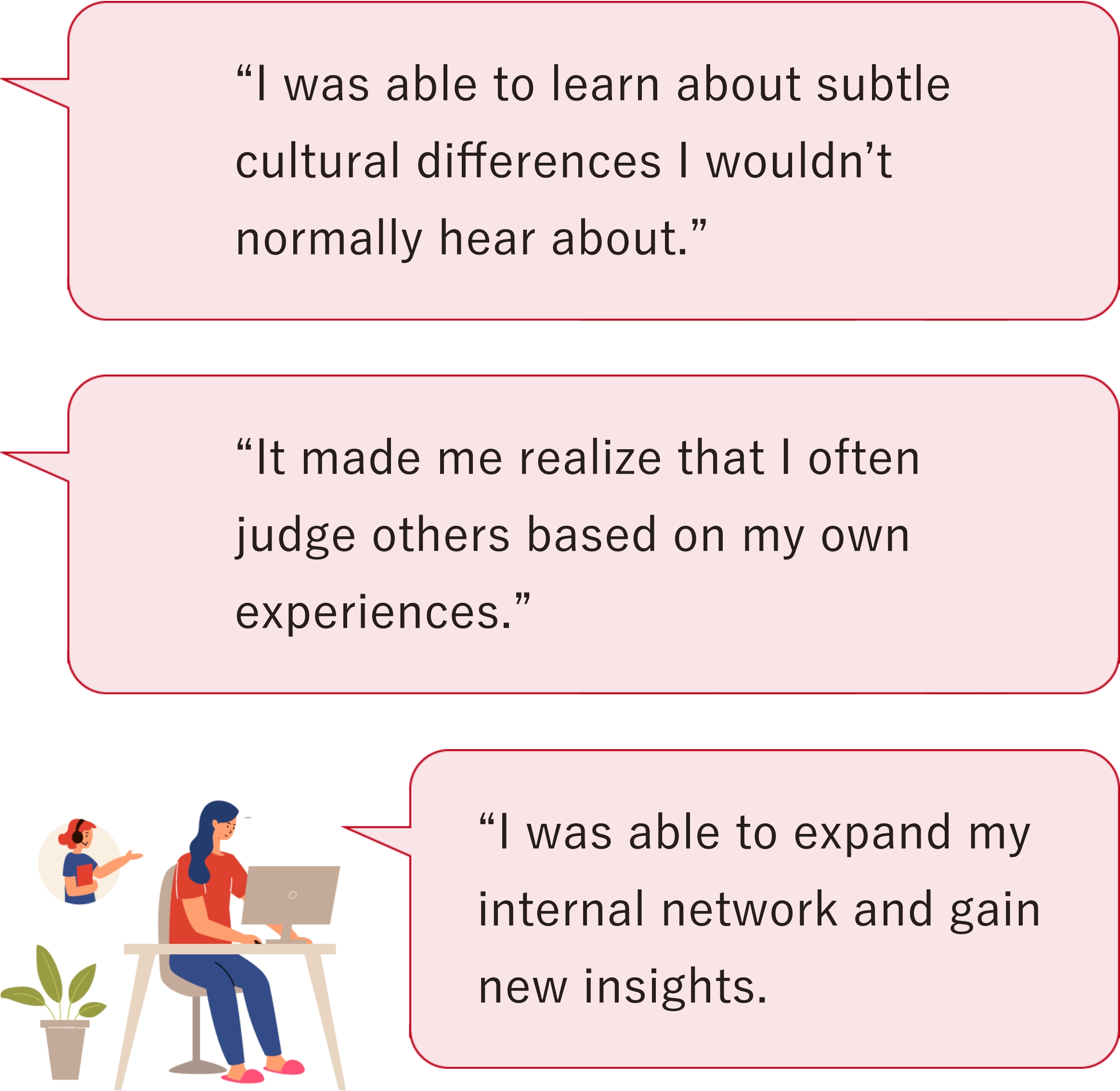
— What challenges did you face, and how did you overcome them?
Nakata: Since 2017, we’ve tried many approaches, and not everything went smoothly. For example, while English-proficient members regularly joined events, those less comfortable with English still found it difficult to participate. So, we created programs that allowed Japanese use to ensure psychological safety. We’ve continued to listen carefully to different perspectives and designed inclusive, engaging initiatives to foster mutual understanding. These efforts ultimately led to us receiving the Psychological Safety Award.
03
Cultivating an Inclusive Mindset is Like Muscle Training
— You’ve continued with the implementation of multifaceted approaches in a challenging, globalized environment. It's fascinating to see that seeds of innovation are already emerging, such as winning entries in internal contests. What is the significance of continuing these activities, and what are your future plans?
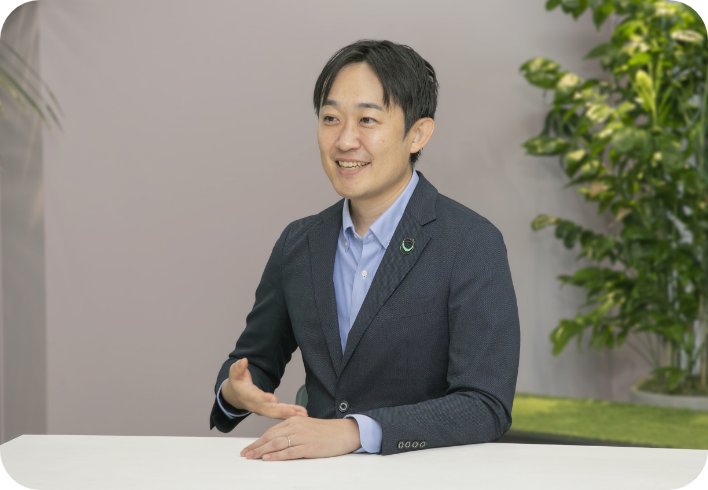 Ikeda: A psychologically safe environment supports an inclusive culture that welcomes diversity. This foundation is essential for creating new value, such as winning international awards or developing globally successful products. The initiatives we have introduced were proposed and led by employees themselves. This has gradually shifted individual mindsets and evolved our organizational culture. However, to further advance this cultural transformation, we also need to improve systems to further support psychological safety. We’re currently reviewing decision-making processes and introducing translation tools.
Ikeda: A psychologically safe environment supports an inclusive culture that welcomes diversity. This foundation is essential for creating new value, such as winning international awards or developing globally successful products. The initiatives we have introduced were proposed and led by employees themselves. This has gradually shifted individual mindsets and evolved our organizational culture. However, to further advance this cultural transformation, we also need to improve systems to further support psychological safety. We’re currently reviewing decision-making processes and introducing translation tools.
Cultivating an inclusive mindset and culture is like strength training—it takes time and consistent effort. If we stop, we risk regressing. Just like with muscle training, continuing is as important as starting. Moving forward, we aim to expand our efforts in collaboration with the Shiseido DE&I Lab, using data-driven approaches to improve our initiatives.
The R&D Division’s initiatives offer valuable insights into fostering inclusion among individuals with diverse backgrounds. Overcoming “mental barriers” that may undermine psychological safety requires flexible approaches tailored to the organization’s evolving context. It’s not enough to simply gain knowledge—we must also create an environment that encourages action. Lowering the barriers to taking on new challenges and providing opportunities for practice can help employees discover new perspectives and take initiative. At the same time, reviewing decision-making processes and leveraging digital tools can help remove the barriers themselves.
Creating a psychologically safe environment where everyone can speak freely and take on challenges requires steady, ongoing effort. While each organization is different, cultural transformation is never achieved overnight. The Shiseido DE&I Lab will continue working with internal teams to foster an inclusive culture where every individual can shine.
Reference site:DYNAMIC HARMONY | INNOVATION | Shiseido Company
Statistical Analysis: Shintaro Yamaguchi (University of Tokyo), Yoko Okuyama (Uppsala University), Keisuke Tsugumi (Hitotsubashi University), Yuma Oshima (University of Tokyo), Sae Yamamoto (University of Tokyo).

